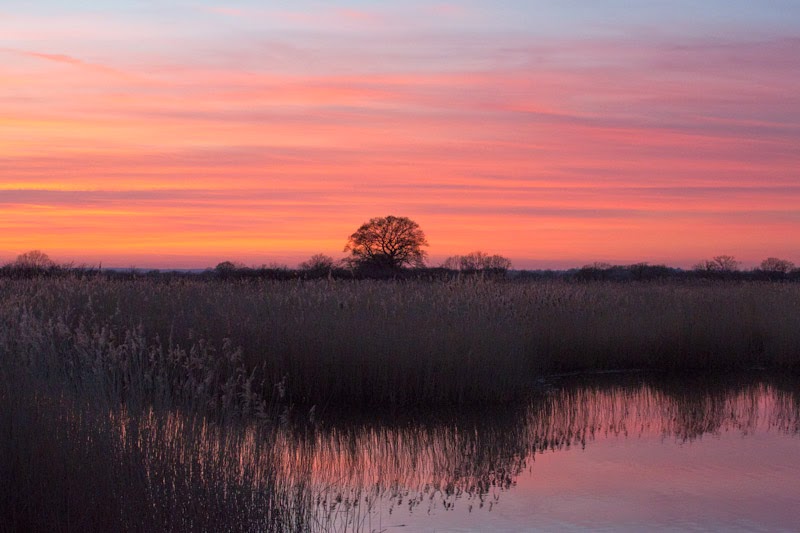 |
| Raven (c) Tezzer |
On Saturday morning we were treated to brilliant views of a sustained hunt by a Marsh Harrier over Greenaways. The bird wheeled low over the ditches, hanging almost motionless on the strong wind occasionally landing among the tussocks when only its pale head would show. A Peregrine set all the birds on Big Otmoor up on several occasions and a Sparrowhawk was also noted.
 |
| Goldies among the tussocks (c) Bark Phonescoped |
There are still over two hundred and fifty Golden Plovers present on Big Otmoor. Many of them are almost completely moulted now into their smart summer plumage. They are restless and vocal, hunkered down on the edge of the pools facing into the wind. Careful scoping of them shows lots of interactions and frequent changes of position within the flock. There is one aberrant bird there. It is a partially leuchistic individual, its primaries and secondaries are almost white on their upper surface and it can really only be picked up when in flight. Had the flock been properly out in the open it might have been possible to locate it on the ground, but they were mostly hidden by the sedges.
It seems likely that Ravens are breeding close by the reserve. There were two over big Otmoor on Sunday I saw another in the same area and heading purposefully in a similar direction on Sunday. Their deliberate powerful flight, the heavy bill and shaggy throat make them very distinctive.
Snipe are present in very large numbers we counted one flock of forty plus coming off The Closes. On Saturday morning at least three were drumming but the sound was carried away by the wind and only their roller coaster flight betrayed their purpose.
Chiffchaffs are calling in several locations now and can also be seen feeding quietly and busily in the hedgerows. Perhaps if the weather mellows by next weekend, they might be joined by other warblers and fresh incomers. I was however, privileged and delighted to be shown the newest Otmoor arrival on Sunday. In the back of a trailer in the farm at Noke was the very first of the season’s black mountain lambs, attended by its mother and no more than a few hours old. Spring moves on despite the weather.
 |
| Blackthorn Flowers (c) Tom N-L |
















.JPG)


































